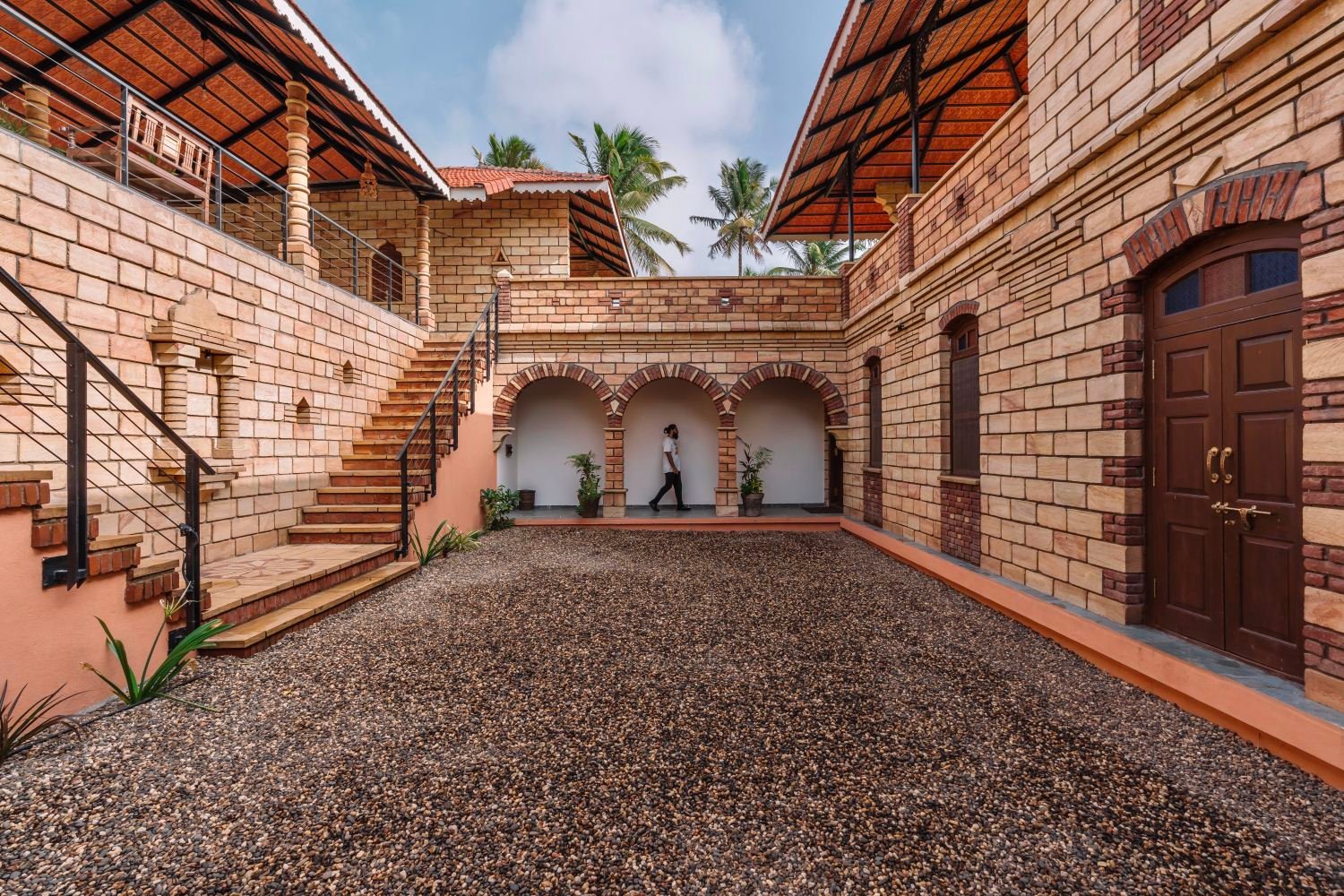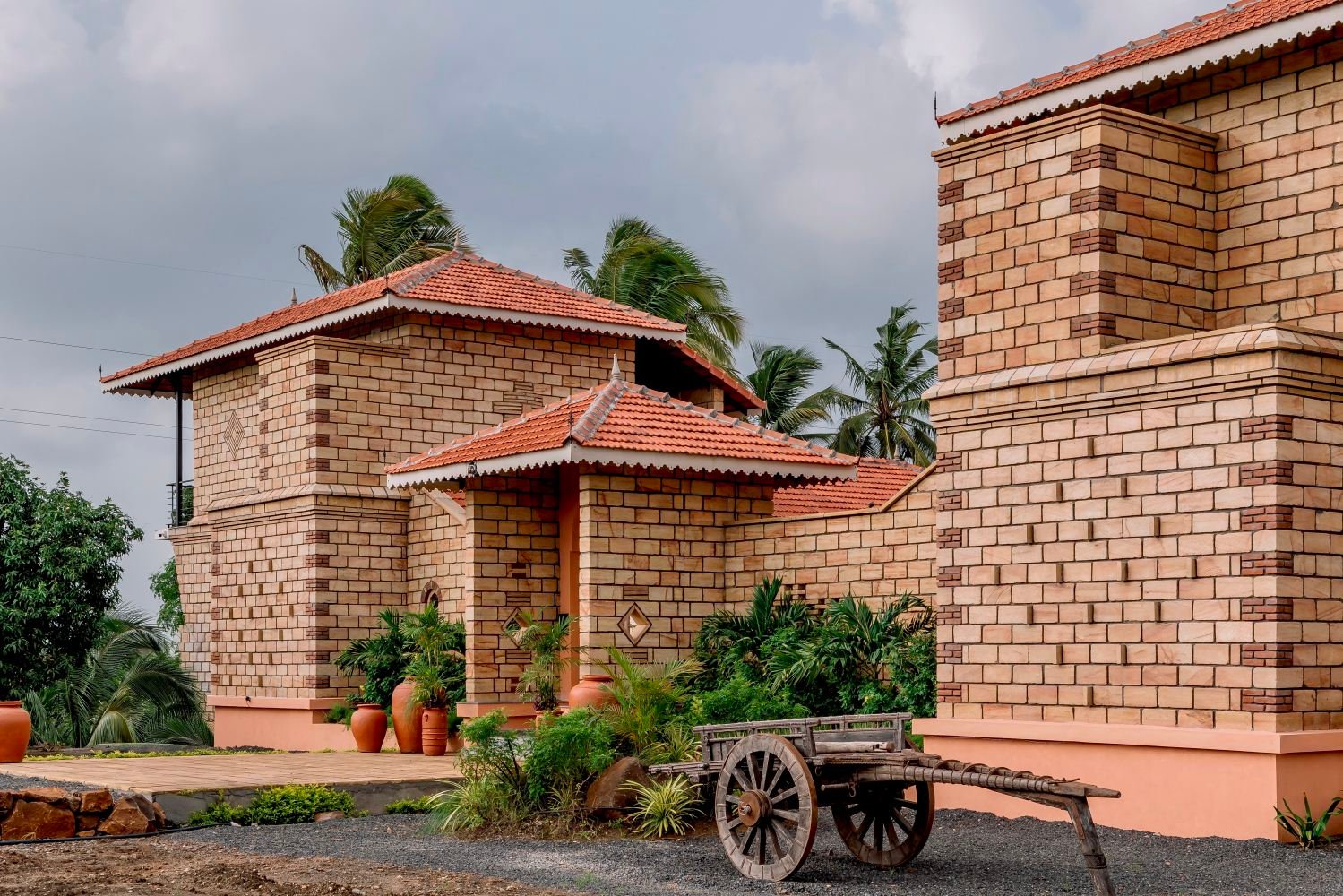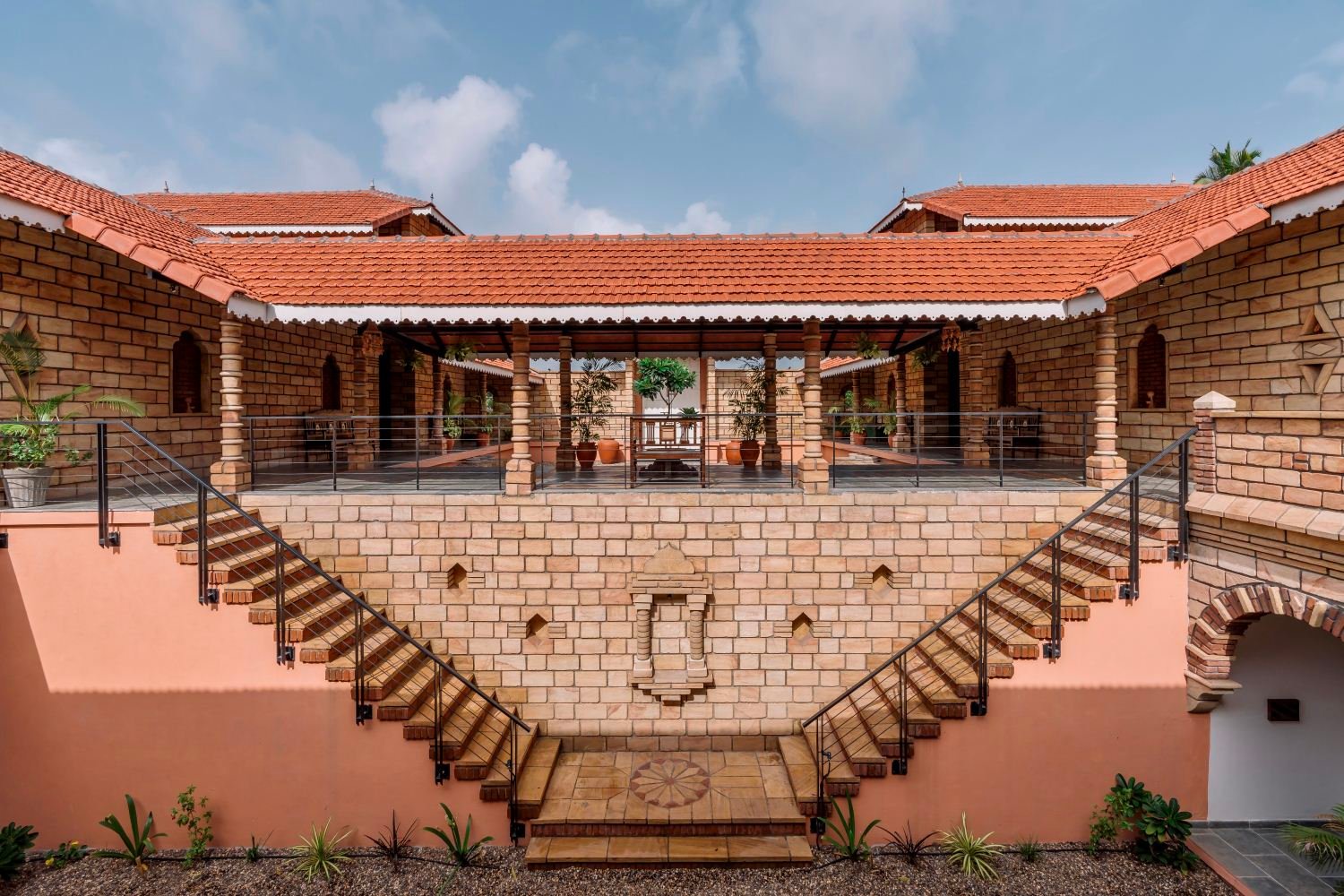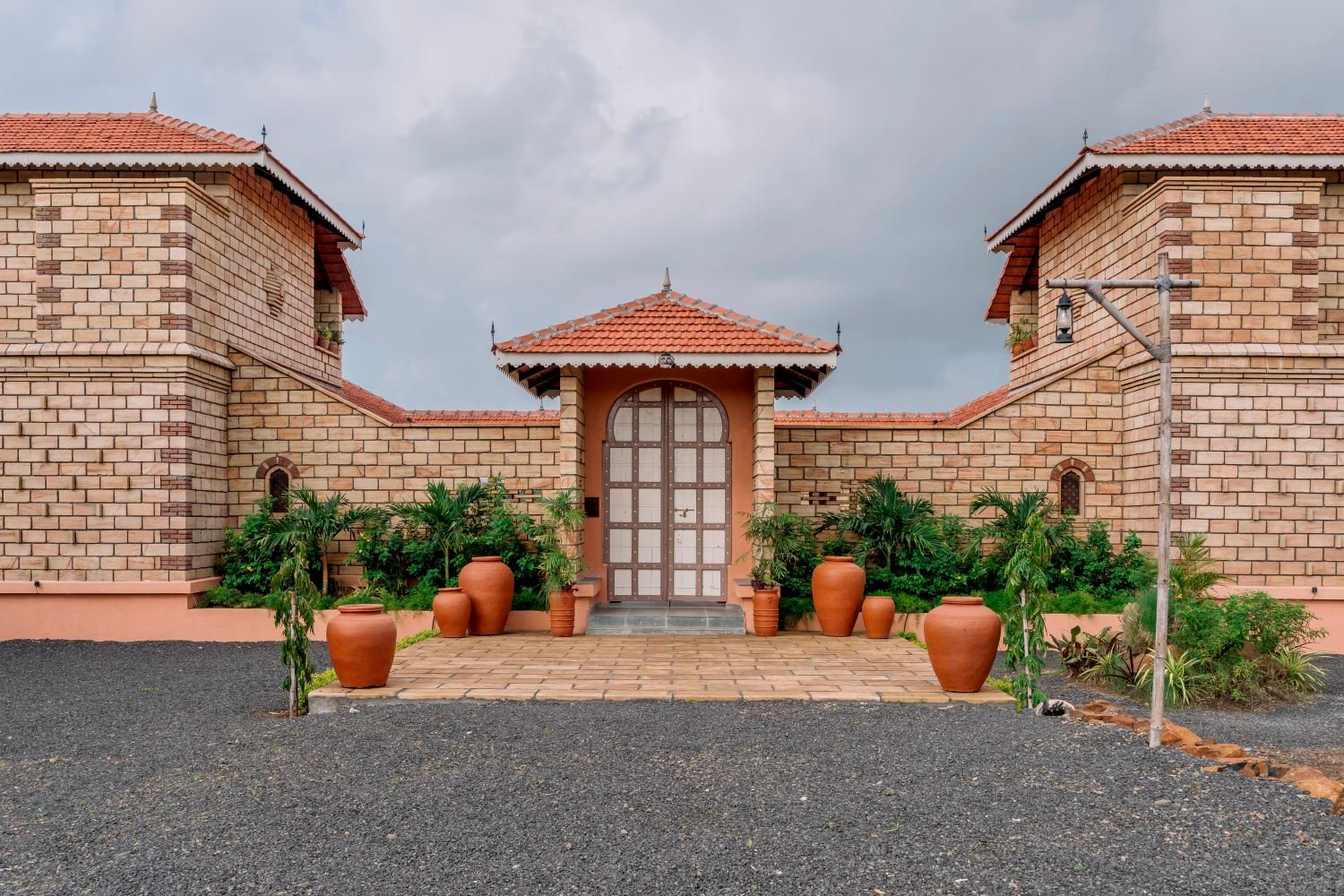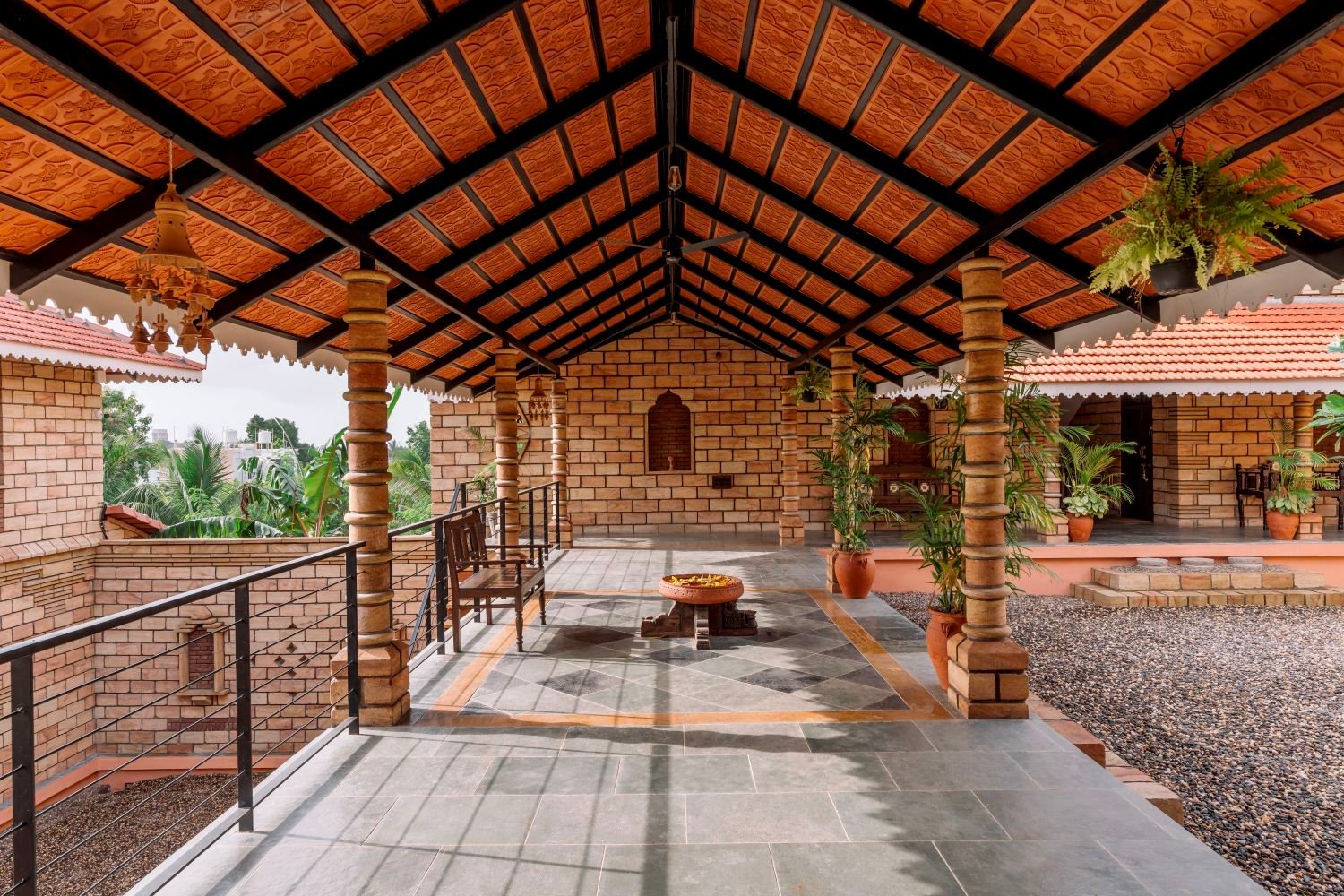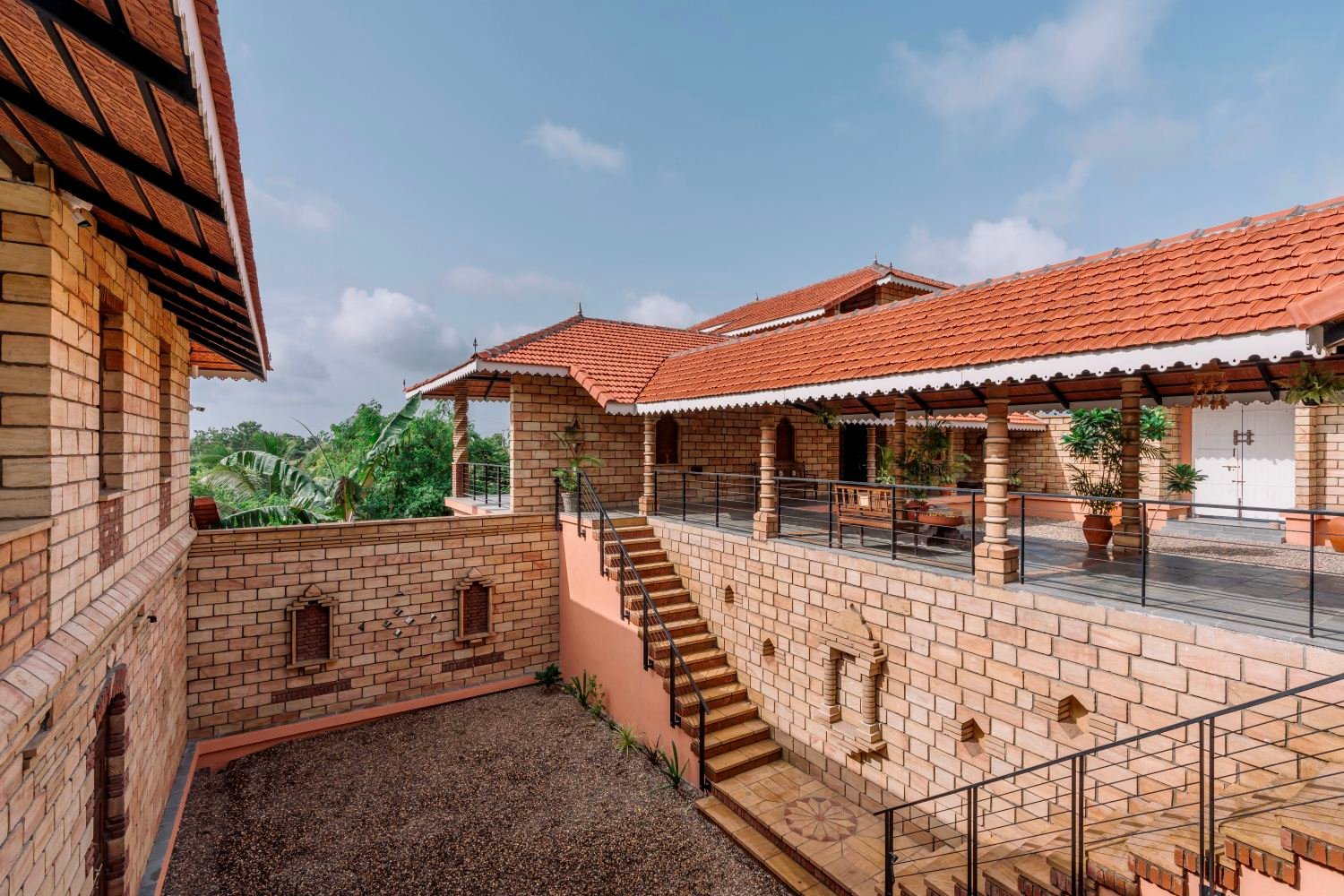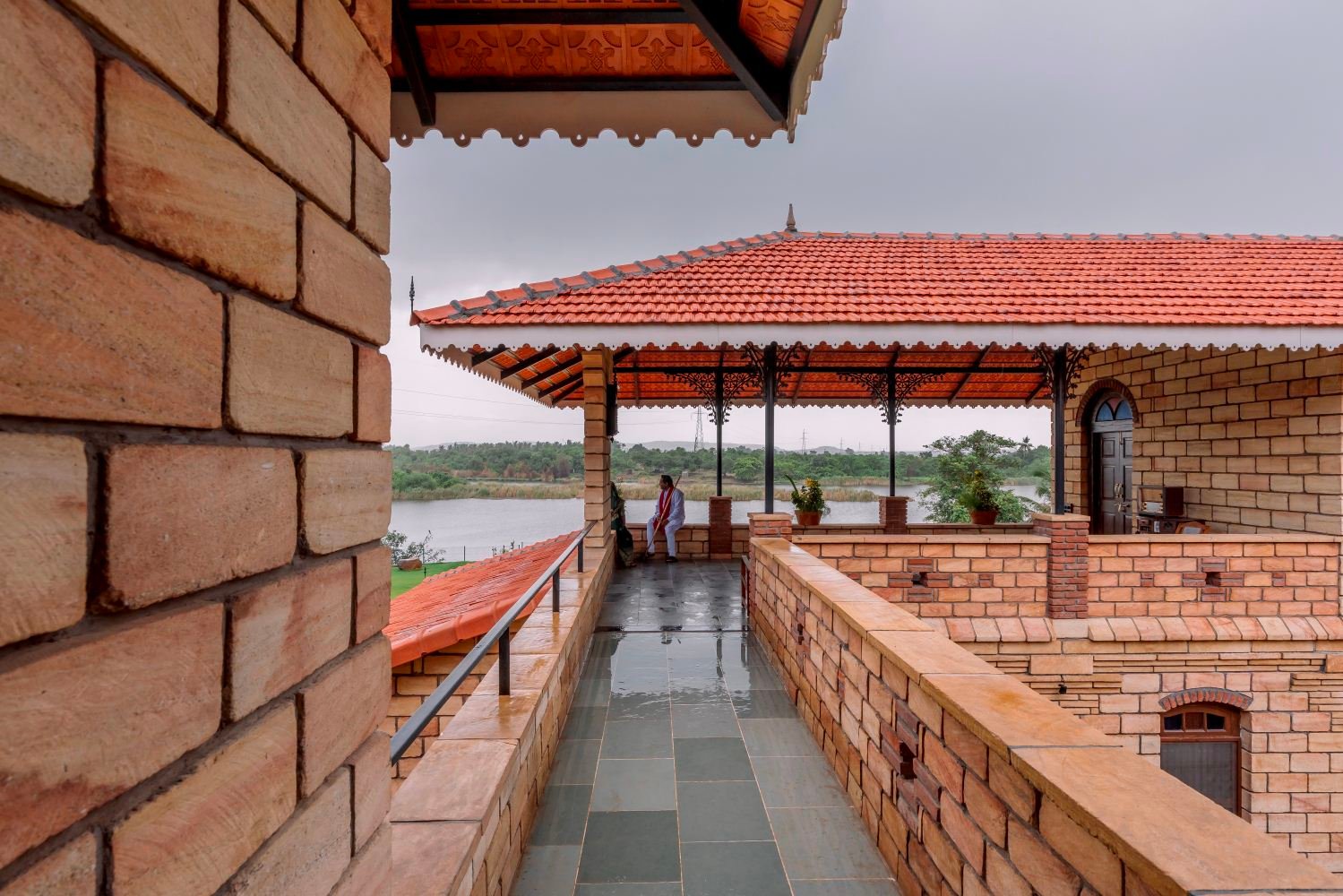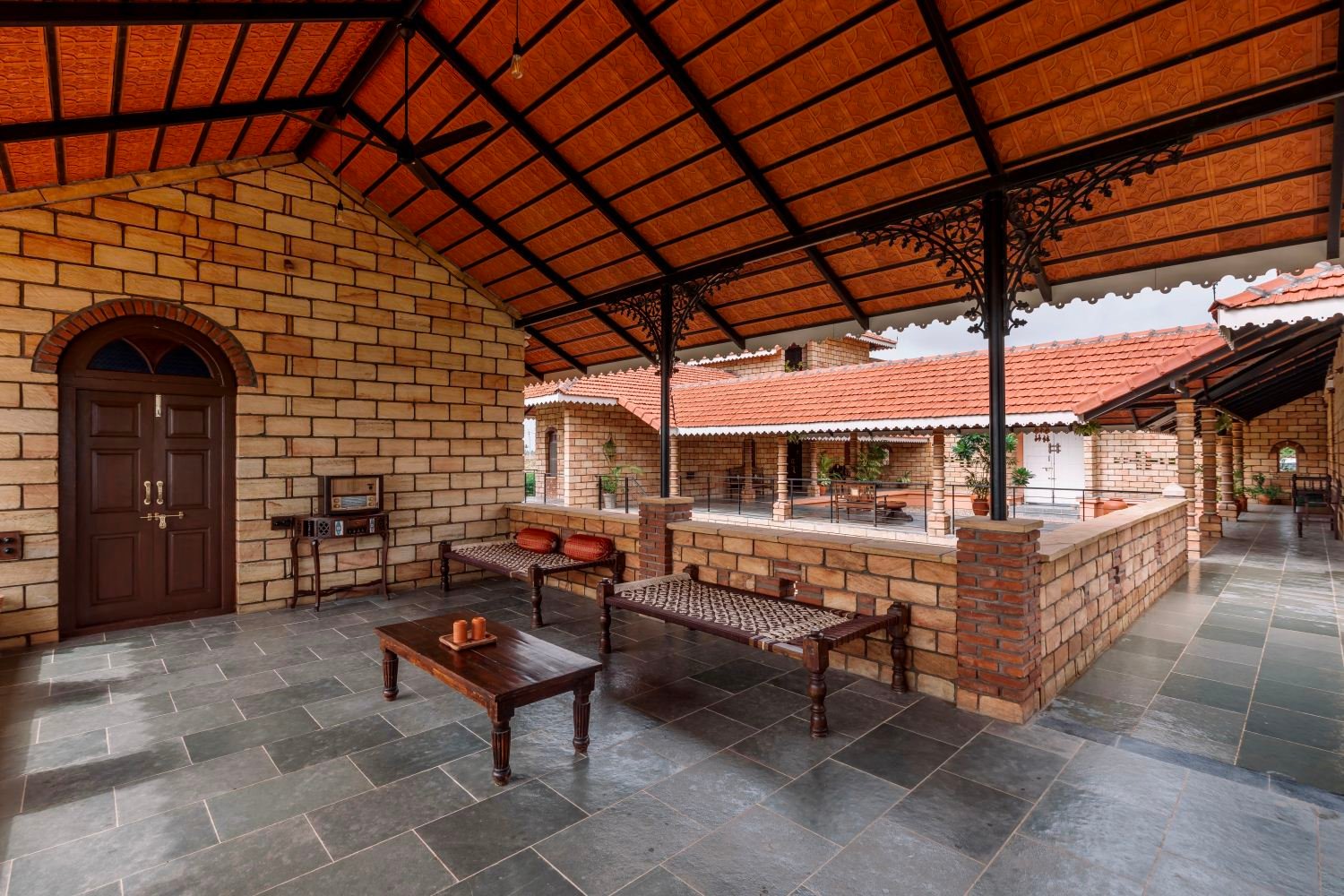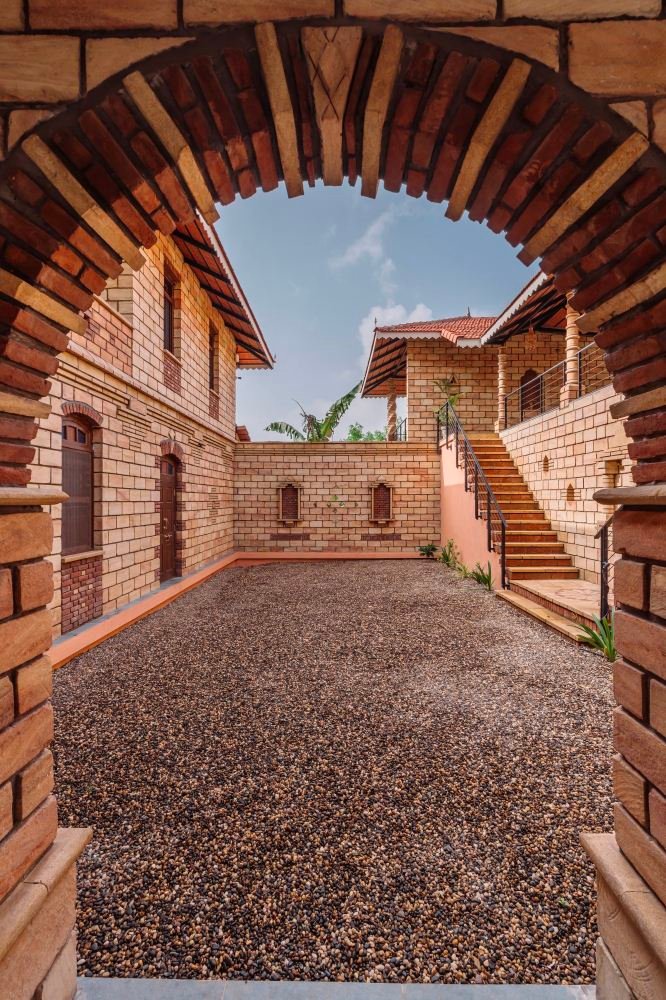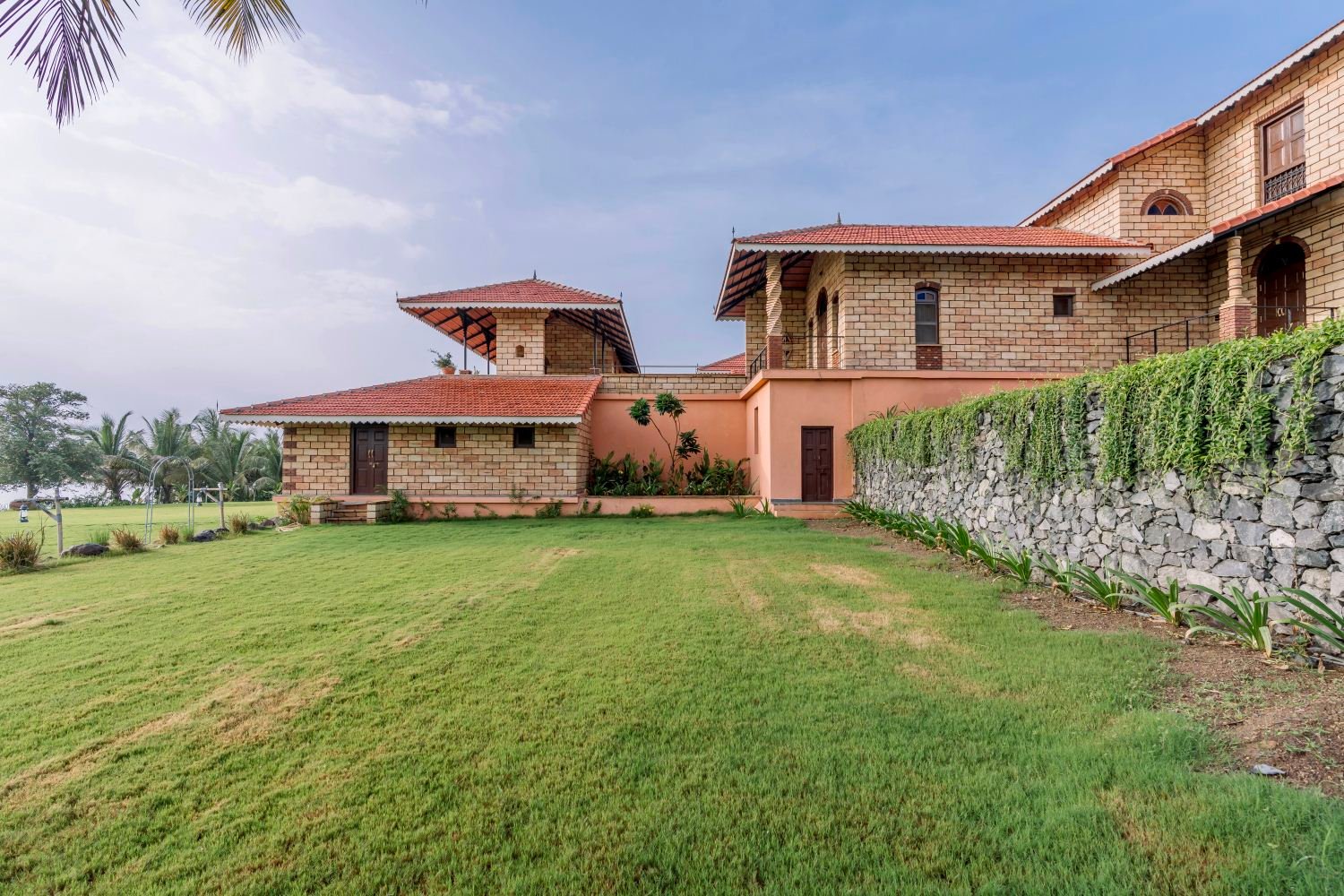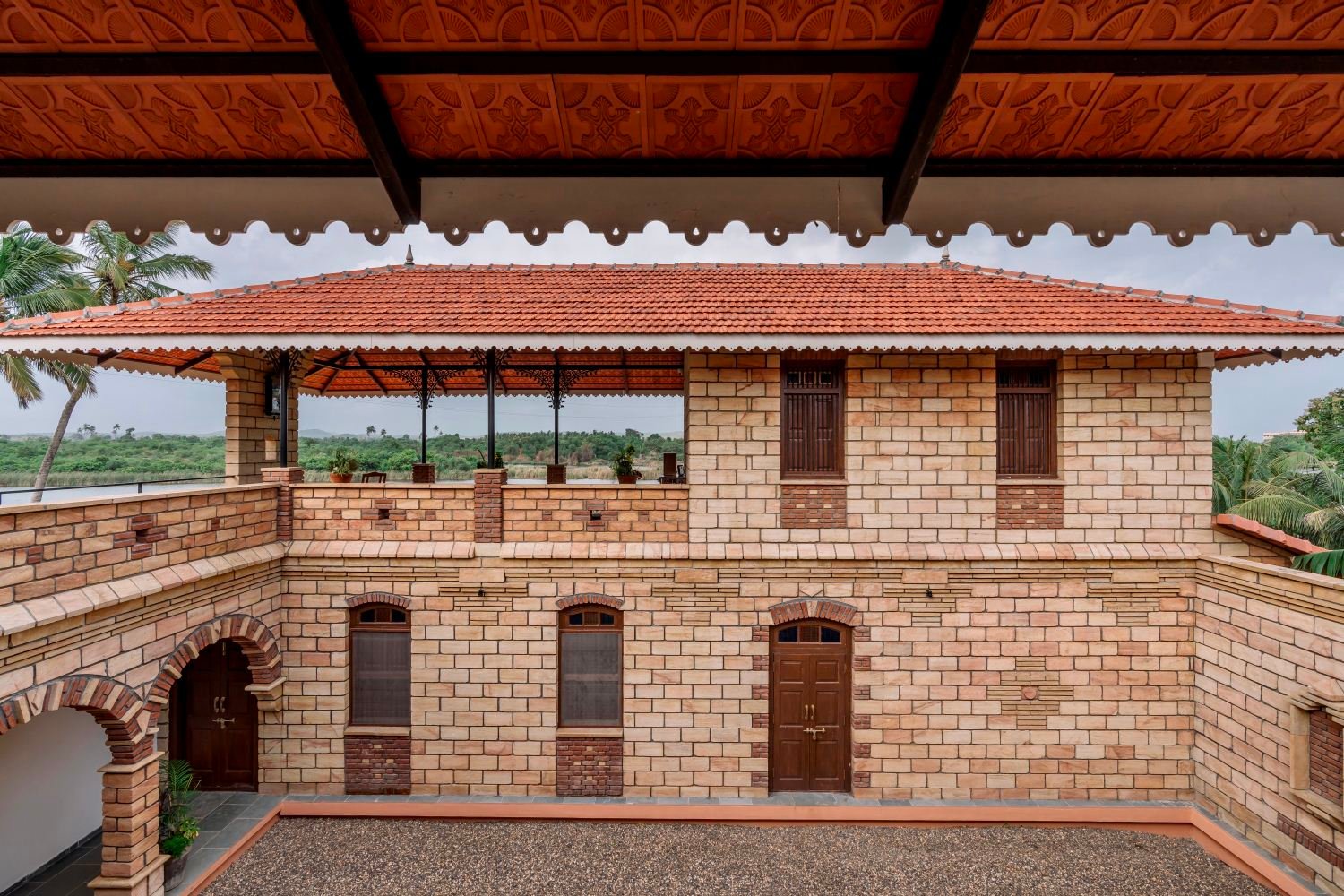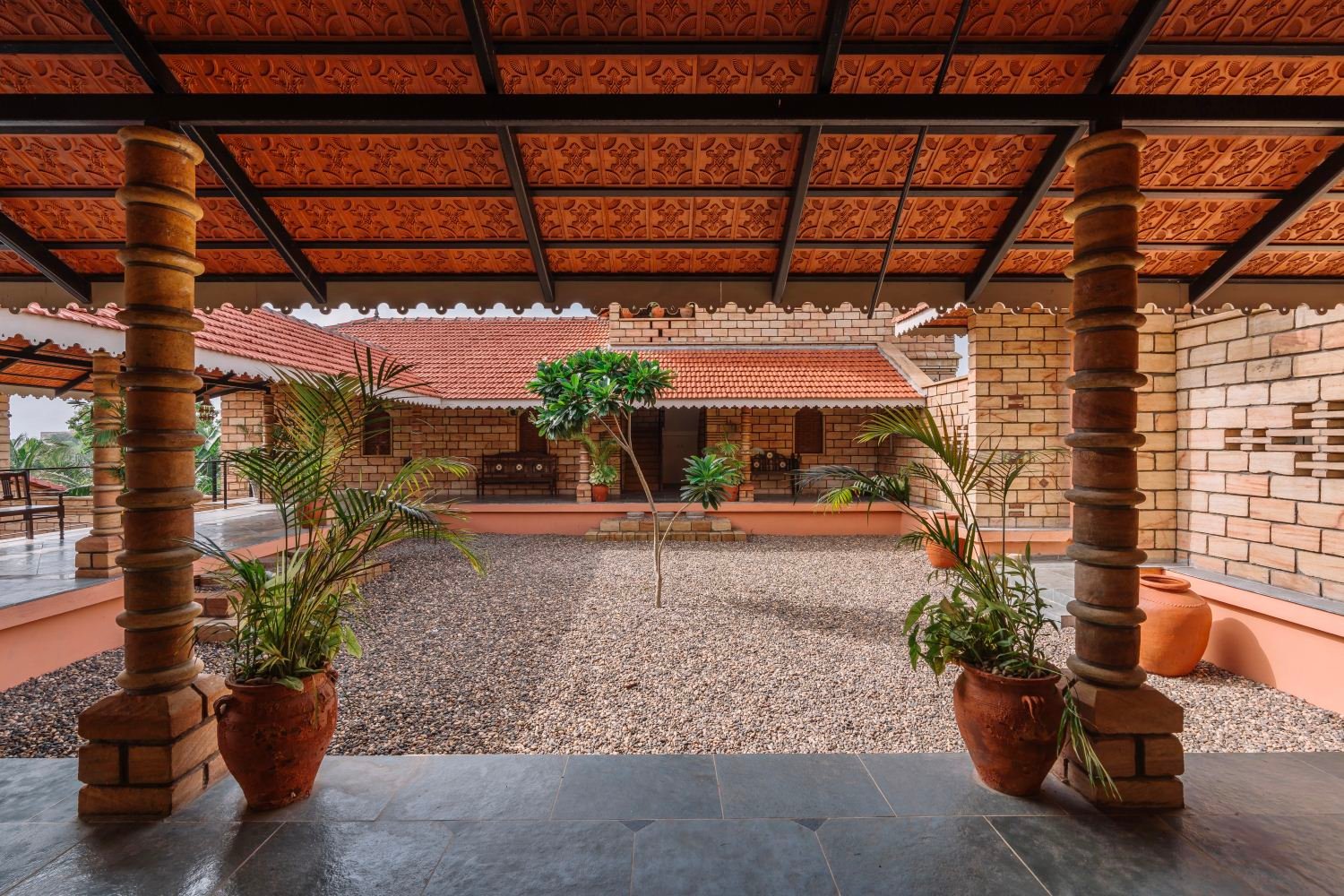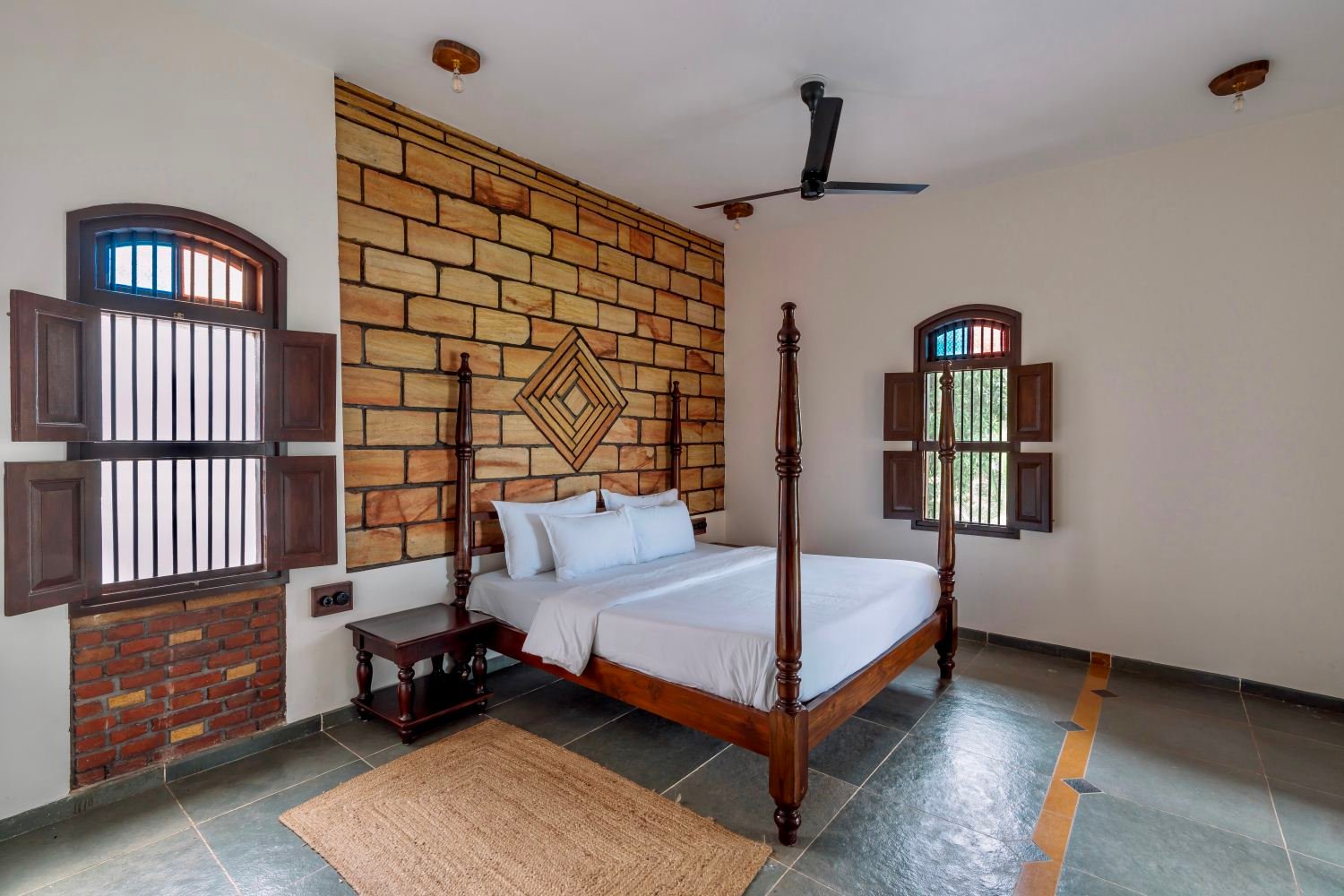Project Narrative
The site’s primary challenge lies in its two distinct levels, separated by an 8-foot difference in height. The approach to the homestay is designed to be intimate, with an inviting entrance that obscures direct views of the river, maintaining an element of surprise. Upon entering, the spatial arrangement unfolds much like a home—rooted in the vernacular typology of kathiyawadi dwellings which has a central courtyard around which the spaces are placed.
Despite being a hospitality project, the homestay is treated architecturally and programmatically as a house. It follows the traditional layout of a delo, where an entrance courtyard acts as the first threshold, leading into a larger central aangnu (courtyard) around which private spaces are organized. This courtyard is not only a climatic device but also a social hub, reminiscent of the Rushitoya in traditional Kathiyawadi homes, where gatherings and performances take place. The upper level remains private, housing bedrooms, while the lower, sunken areas accommodate public functions such as the living, dining, and kitchen. Unlike conventional hospitality designs where private rooms directly open to the river, this homestay takes a more layered approach—while all spaces are oriented towards the river, they remain discreetly distanced from one another. The river view is intentionally concealed upon arrival, only revealing itself gradually as one moves through the spaces.
Entry into the homestay begins at the ground floor, leading directly into the main courtyard, which acts as the central dispersal point for the rooms. The courtyard extends seamlessly into a bridge that leads to semi-covered and covered living areas that subtly frame views of the river without immediate exposure.
The bridge also connects to a staircase that descends to the lower level, where the aangnu transitions into the dining area. This interplay of levels—where the sunken courtyard is cooler than the upper semi covered spaces—creates a natural microclimate.
The building derives its strength from load-bearing construction, avoiding RCC usage and instead relying on a combination of brick and local sand stone. The project extensively uses recycled local materials, particularly old teakwood doors and windows, which are sourced and repurposed to maintain authenticity as well as economy. Experimenting with visual details onsite is a significant way of working for Himanshu’s practice like surface patterns, incorporating niches or details which adds a celebratory character to the space, making it dynamic and responsive to the traditions it seeks to uphold.


